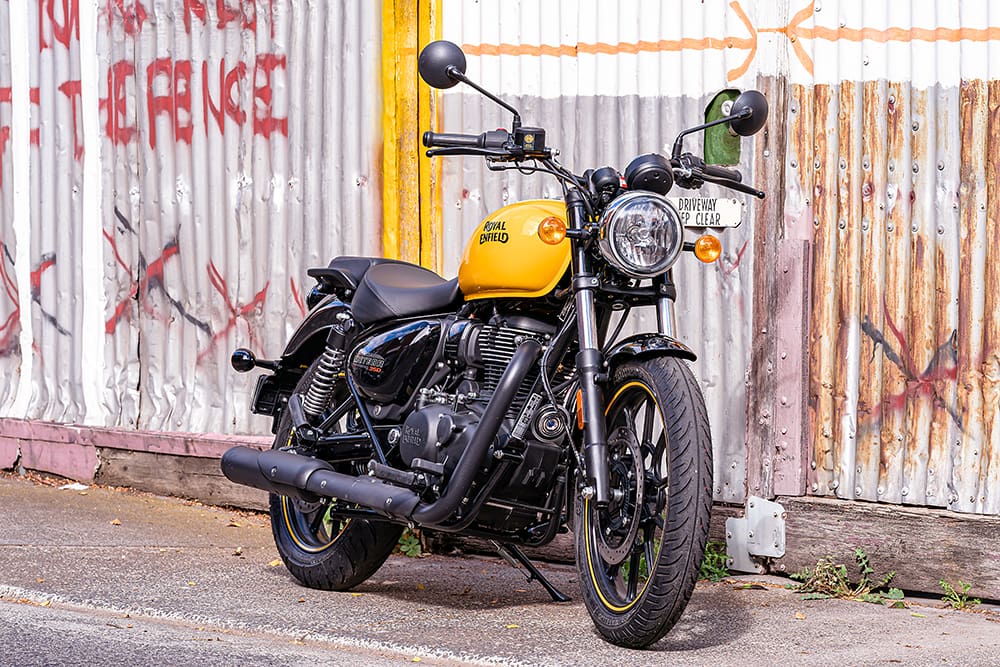Test Kel Buckley Photography Mark Dadswell
You can learn a lot about a motorcycle when you’re running late. What should have been a gentle cruise down the east coast of Melbourne’s Port Phillip Bay under a sparkling autumn sun, turned into a ride with purpose when it became clear we were going to miss our 1pm lunch booking.
Not the sort of purposeful ride where you exceed the speed limit, but the type where you get up to the speed limit quickly, brake a bit later, dart between cars, lane split to the front of queued traffic, all in the name of getting a relaxed meal in Melbourne’s strict new era of Covid-safe hospitality.

I’m on the latest addition to Royal Enfield Australia’s line-up and negotiating the hordes of recently freed civilians all heading to the Mornington Peninsula to soak up the afternoon rays is actually not too far from the Meteor 350’s design brief.
An urban-oriented small-capacity cruiser, it comes in as an all-new machine to replace the firm’s Rumbler – and not before time. Because while the Rumbler’s awkward chopper-ish styling was enormously popular in India (it was called the Thunderbird in Royal Enfield’s domestic market – and it sold in droves), it was a look that didn’t translate particularly well to the western market, whose learner-approved options are many and varied.

Modern Royal Enfields are refreshingly basic, but built tough and genuinely bulletproof. The release of the firm’s hugely popular 650 twins a couple of years ago was the first fruit of some significant investment by the Indian brand; gone was the charming unrefined nature of Enfields up to that point, and in came a pair of well-finished, well-executed but really affordable middleweight nakeds that pretty much set a new standard in the mid-sized retro market.
So the most significant takeaway from a day on the new Meteor 350 is that the new level of refinement from Royal Enfield is a trajectory we can expect to continue from a brand who is celebrating its 120th birthday in 2021.
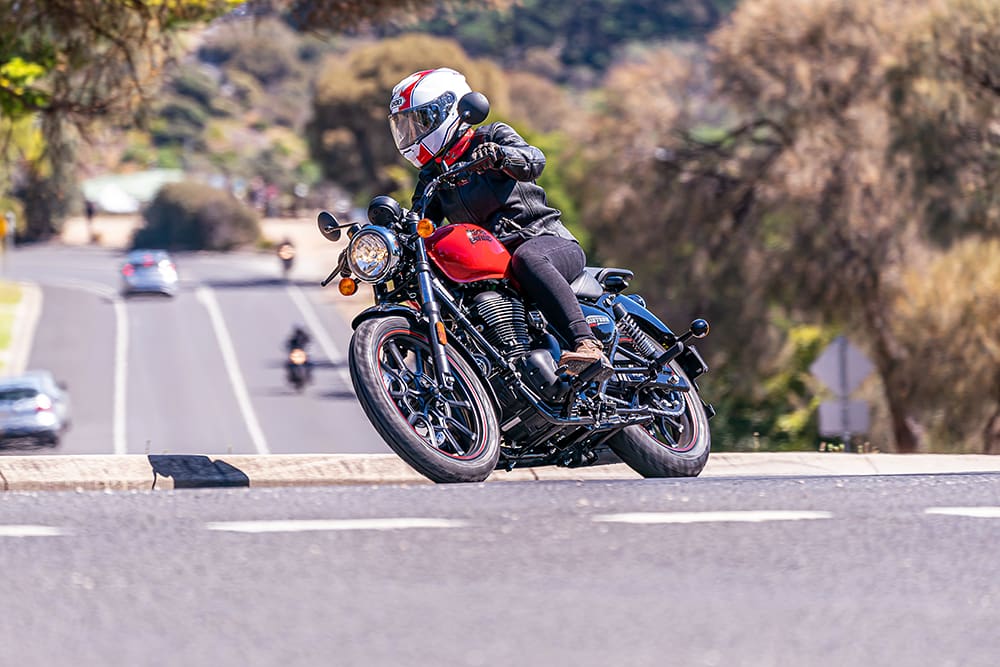
Because once you’ve settled into the comfortable cockpit, thumbed the bike into life and accelerated cleanly away from a standstill, you can’t shake the feeling of familiarity. Not because you may have spent a bit of time on the Rumbler, or not because Royal Enfield is trying to copy any of its rivals, but because it’s just a really well-executed motorcycle.
It’s powered by a fuel-injected 349cc single-cylinder air-cooled engine, which is good for 20-odd horsepower and 27Nm of torque. Numbers that may not raise many eyebrows, but they are numbers that give the Meteor 350 solid real-word rideability and let me accelerate confidently away from inpatient drivers who I’d just leap-frogged at the lights. The confidence comes back to that familiarity, because instead of the lumpy old-world feel of previous single-cylinder Enfields, the Meteor benefits from the addition of a balancer shaft which smooths out performance and allows it to rev higher than other RE singles.

The engine is matched to a five-speed gearbox and while we all inevitably toe around for the phantom sixth gear, peak torque chimes in at a relatively high 4000rpm – not that there’s a tacho to indicate your rpm – which justifies the five-speed box and makes it a really versatile engine. Which is exactly what a practical commuter needs.
Speaking of practicalities, I love the addition of what the firm is calling its Tripper navigation system. Innovative in its simplicity amid a sea of large and multi-coloured touchscreens, the Meteor 350 boasts a small coloured display offering the rider simple, but useful turn-by-turn navigation. Not much bigger than a 50-cent coin and sitting alongside the larger circular dash unit, it gleans its information through an app on your smartphone that allows you to set waypoints through to an eventual destination, save routes, and even share them with your mates.

In use, it offers the rider clear but simple instructions in the form of distance until the point at which you need to make a turn and a large arrow advising of such overlaid on the type of intersection you’re approaching. Plain, simple and really practical – and there’s a USB outlet tucked neatly on the side of the left-hand switch block to keep your device charged while you’re using it.
The dash itself is relatively informative, given the bike’s price point. An analogue speedo surrounds a clear LCD screen which projects a clock, fuel gauge, gear-position indicator, an odo and two trip meters, which you can scroll between and reset via a small button on the rear of the left-hand switchblock.

Weighing in at 191kg ready to ride and complemented by a low 765mm seat height and low centre of gravity, the Meteor 350 is light, agile and thoroughly user friendly. It meant that with one eye on the about-to-change traffic lights, I could thread the bike through traffic with confident agility, either at walking pace or higher, and between or across multiple lanes, helped also by a decent turning circle.
The low centre of gravity means you never have to think about where you park it because it’s so damn easy to move about, either sitting on the seat or standing beside it.
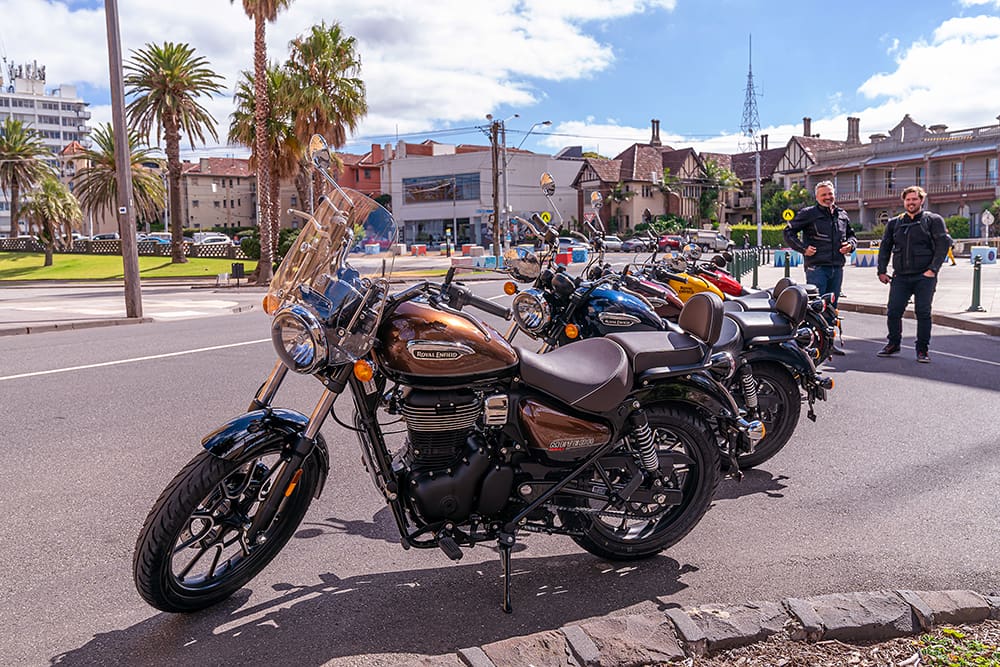
It boasts a throaty exhaust note, handy for filtering through traffic, and sounds a little meaner than a 350cc single probably ought to. Similarly, two really good-sized grab handles flank a large and plush pillion seat, which extends the bike’s versatility just a bit further again and makes carrying a pillion or a bit of luggage a really achievable proposition.
The twin-downtube backbone chassis is an all-new affair and, much like the 650 twins’ frames which were built under the well-informed eye of the Royal Enfield-owned Harris Performance, makes every riding situation intuitive and completely free of surprises. It’s suspended on a basic but effective non-adjustable 41mm right-way-up fork, matched to a pair of shocks at the rear which offer six levels of preload adjustability and the package does a really decent job of absorbing less-than-desirable road conditions.
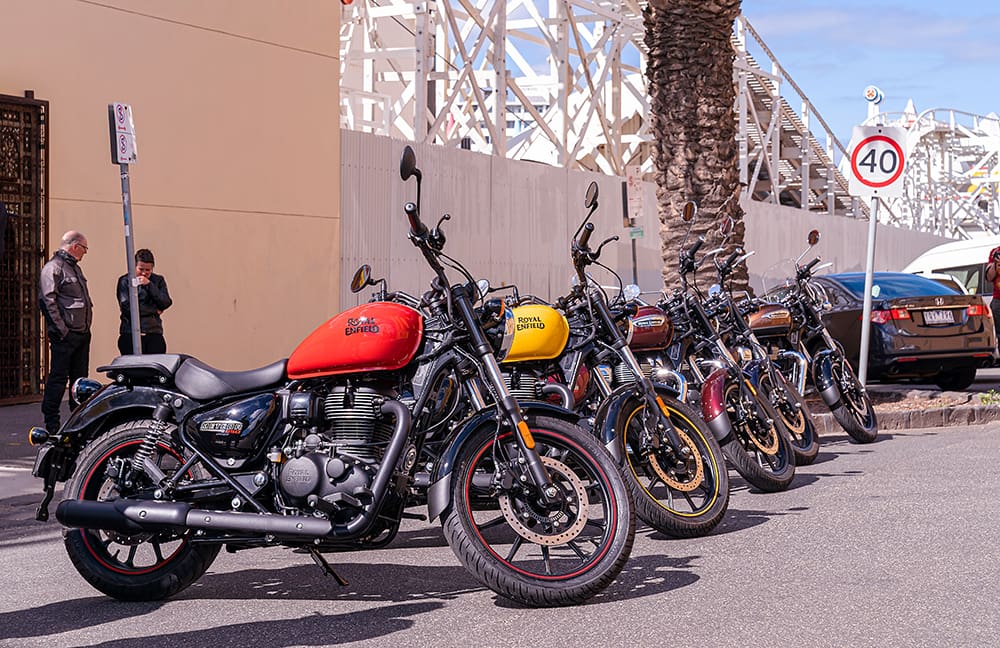
The single disc brake setup at both ends meets the design brief, they’re bolstered by a two-channel ABS system and, with decent feel in the rear, adds to the low-speed manoeuvrability of the little cruiser. Wider tyres do wonders for improving the look of the Meteor over its predecessor, as does replacing the Rumbler’s 18-inch rear with a more conventional 17-inch affair, and while the front stays at a cruisey 19-inch diameter it’s now a 100-section compared to a slimmer 90-section front hoop.
As well as far more pleasing styling, the Meteor 350 has copped a five-litre capacity drop over the outgoing Rumbler, but given its 15-litre tank capacity and the engine’s meagre fuel consumption, I’m not sure anyone’s going to care too much. And while it might mean you can no longer get your hipster cool on out the front of a city bar, I’m almost certain no one’s going to miss the kickstarter that the Rumbler used to sport in conjunction with the starter motor.
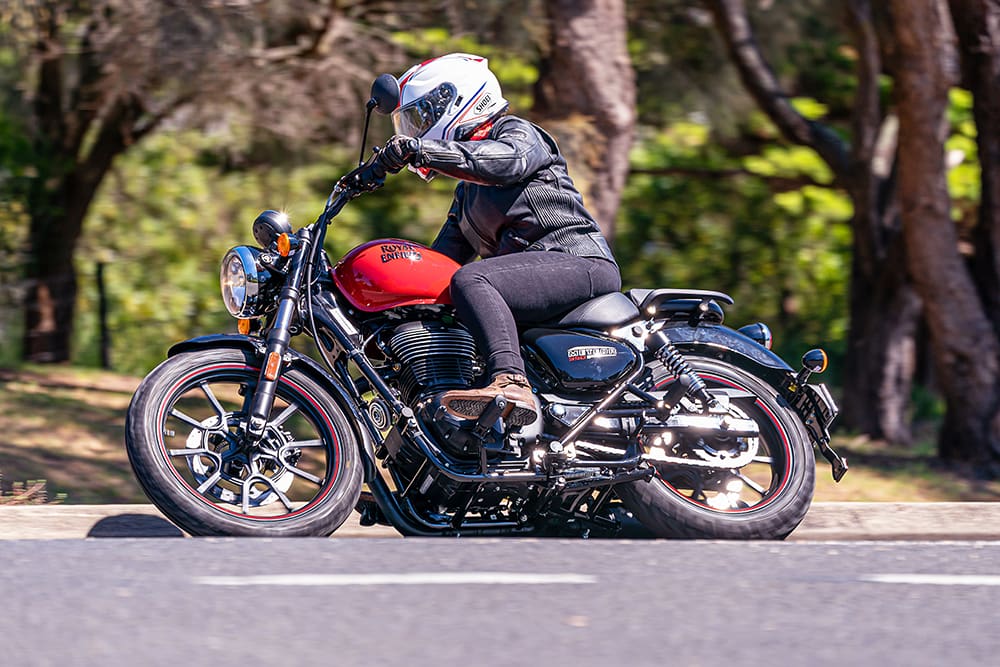
The not-quite apehangers, which were largely responsible for the awkward looks of the outgoing Rumbler, are now lower and blacked out for both a cleaner look and improved ergonomics, and the switchgear and mirrors boast excellent fit and finish. The Meteor’s headlight is more conventional than the Rumbler’s but still boasts a daytime running light, and while it’s not as eye catching, it’s better suited to the new styling.
So while I might have looked at the Meteor 350 through the lens of a capable but clunky executed Rumbler, by the time I arrived in the carpark of Mornington’s historic Royal Hotel overlooking the bay, I was already aware that this Royal Enfield-branded urban cruiser was a completely different kettle of fish.
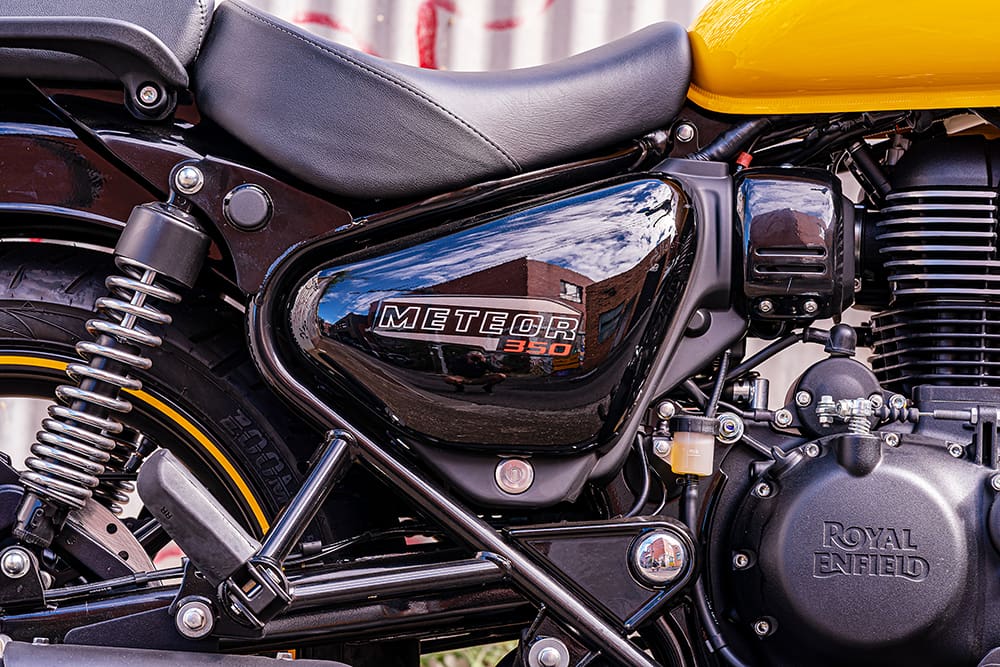
Far more capable in every way, better looking and even boasting technology that meets a modern market’s increasing demands, its accomplishments are far greater than the sum of its parts. The price is just about spot on and, as more and more people look for affordable alternatives to crowded public transport, the timing is impeccable.
